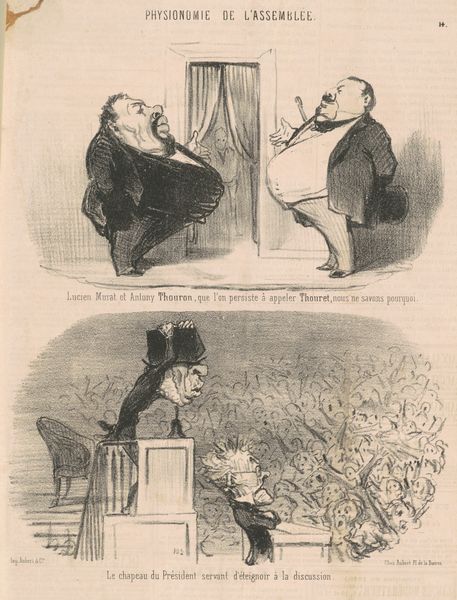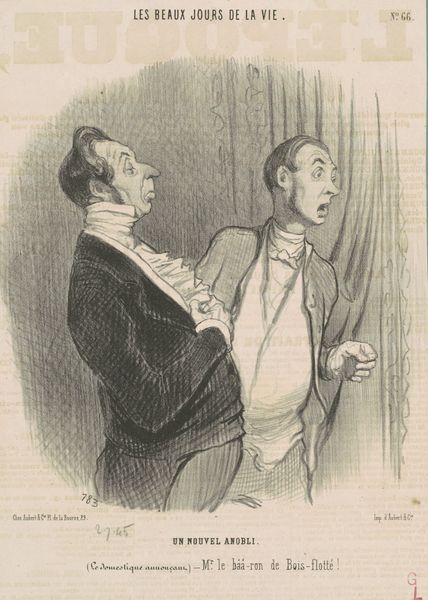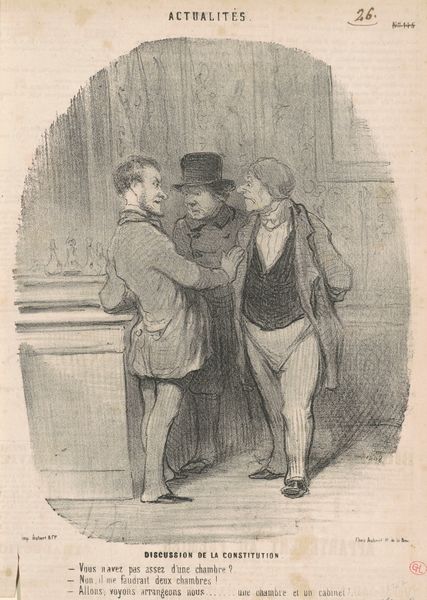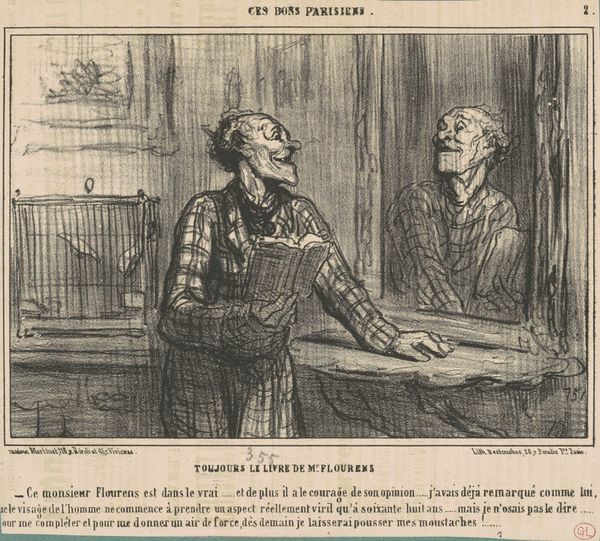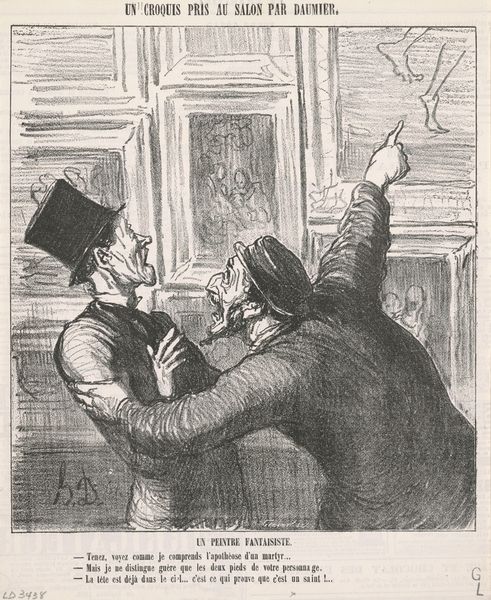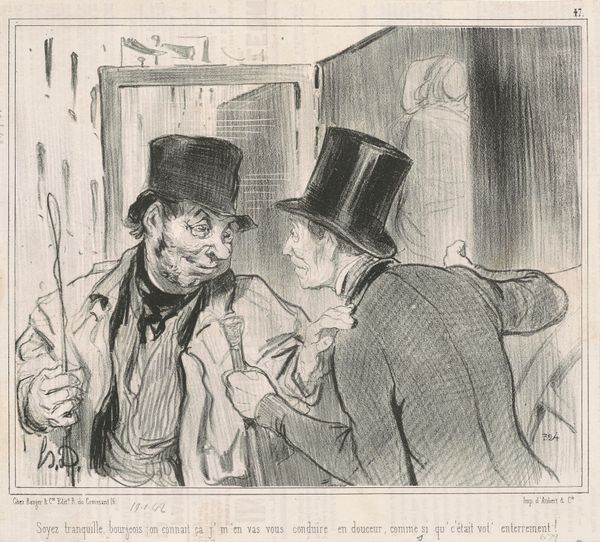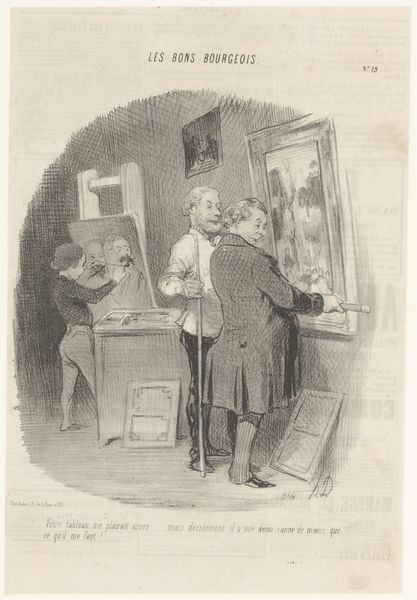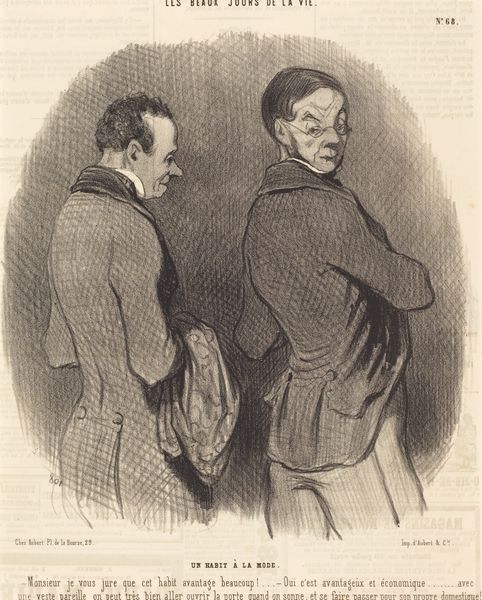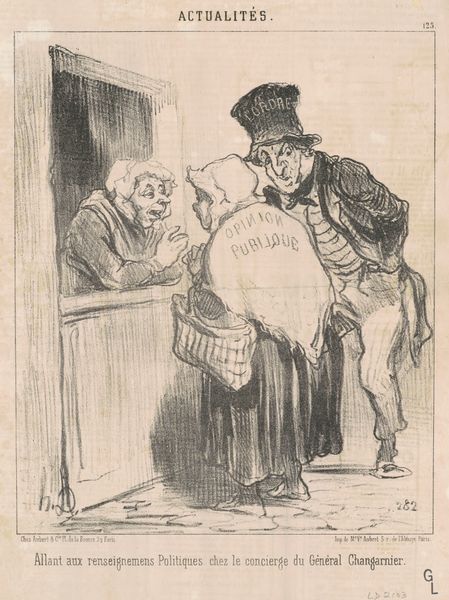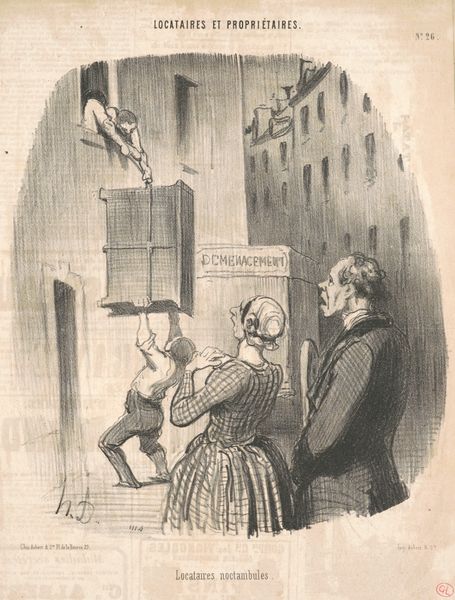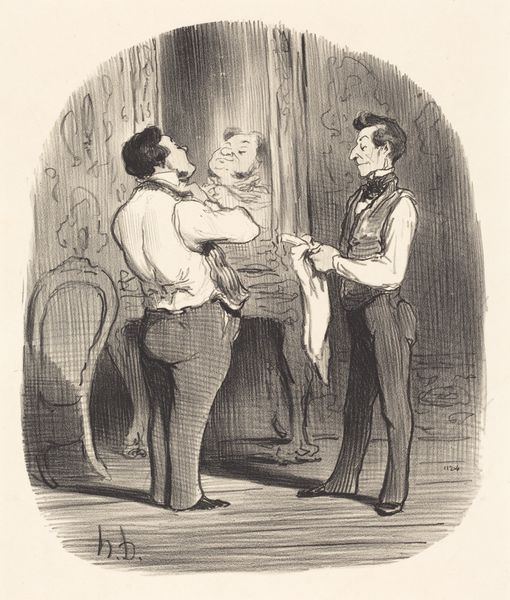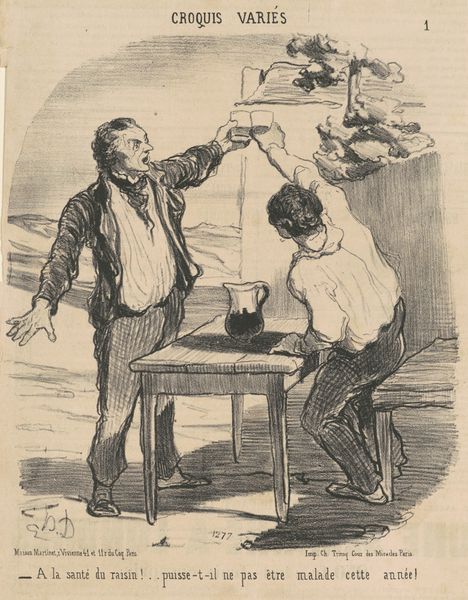
Dis donc, ravignard, si nos femmes nous voyaient! ... c. 19th century
0:00
0:00
drawing, lithograph, print, pen
#
drawing
#
lithograph
# print
#
caricature
#
romanticism
#
pen
#
genre-painting
Copyright: National Gallery of Art: CC0 1.0
Curator: This lithograph with pen and drawing by Honoré Daumier is entitled, “Dis donc, ravignard, si nos femmes nous voyaient! ...”. The date is around the 19th century. What are your first impressions? Editor: My initial reaction is how intimately these two figures are placed within the composition, despite it being a rather typical tavern scene. Their posture communicates a closeness that feels intentionally disruptive, given societal expectations of gender at the time. Curator: Exactly! Daumier was a master of social critique. We must understand the context. He used lithography extensively to comment on the emerging bourgeoisie in 19th-century France. This print appeared in “Les Bons Bourgeois,” a series satirizing the foibles of middle-class life. He depicted politicians and the urban middle class as deceitful, selfish, and immoral. Editor: It’s interesting that you point out the artist's critique, as their words translate roughly to “If our wives could see us,” which hints at anxieties surrounding their perceived misconduct. I'd add that such 'misconduct' by middle class males has always seemed socially permissible while anything resembling a similar infraction from a woman of that same class would result in her immediate social exile. Curator: Certainly. Their whispers convey clandestine behavior and raise broader issues around gender roles and bourgeois respectability. In this period, political instability and socioeconomic transformation prompted caricatures that exposed the moral flaws and excesses. Notice the artist’s detailed use of cross-hatching to build volume and shadows, emphasizing the heaviness of the figures. Editor: Their bloated figures, accentuated by exaggerated line work, almost seem to mock them—revealing how art can expose societal problems. Curator: Indeed! And these men aren't generic; they have their individual affectations and, arguably, imperfections, all brought on by wealth and their roles within it. Editor: Well, on one hand, it's nice that after all this time the same social and wealth-based problematics seem as relevant as ever. I suppose we might view Daumier's work, therefore, as almost timeless. Curator: Exactly. It reveals the continuing pertinence of questions on power, visibility, and accountability. Thanks to his art, conversations on the topic will persist.
Comments
No comments
Be the first to comment and join the conversation on the ultimate creative platform.


